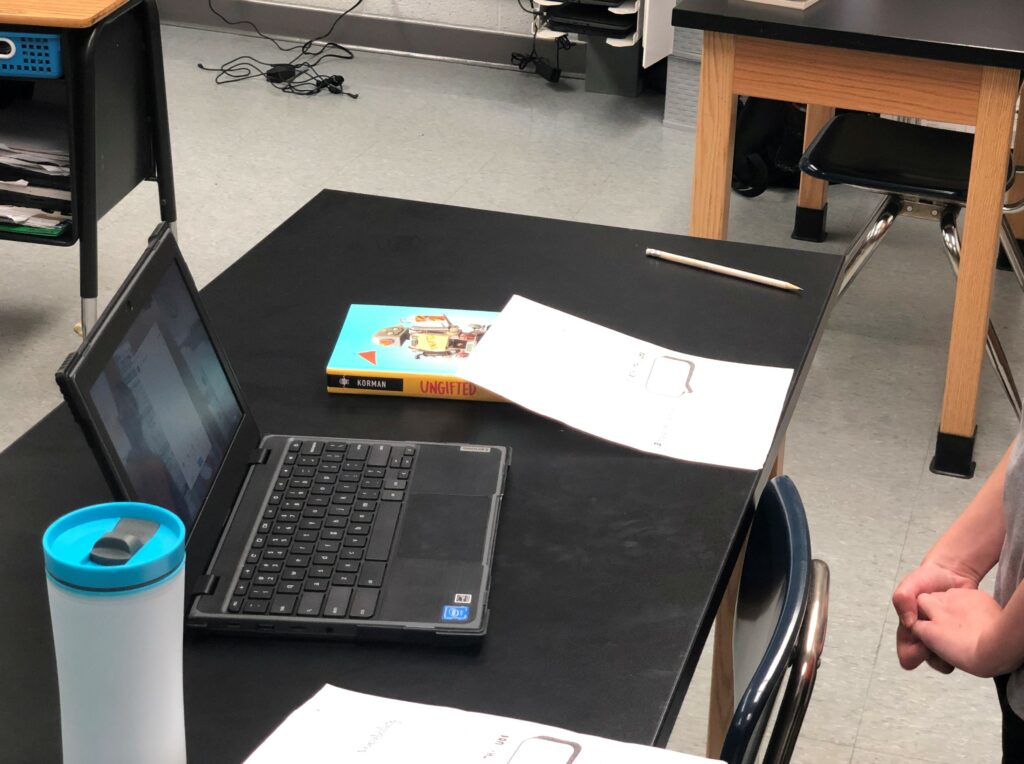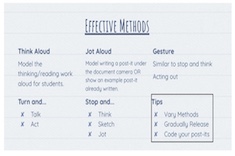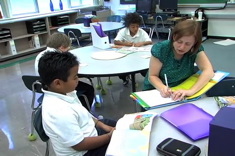Before the pandemic, there were some common technology integrations in literacy classrooms. Learning management systems, like Google Classroom and Seesaw, were becoming ubiquitous for teachers to post assignments and collect students’ writing. Additionally, more students had personal devices, such as Chromebooks and iPads for researching and writing, than even five years previously.
But from where I stood, I saw technology in most schools as ancillary to the core curriculum. Digital tools and online connections were relegated largely to supplementing instruction versus sustaining it as it did during our several months of remote teaching.
It would be a shame not to carry forward some of the lessons we learned, especially when it comes to literacy practices in which technology was a necessary component of teaching and learning.
Book clubs, a standard for supporting student discussion and comprehension around a common text, appear to be one of those practices where hardware and software were a value-added presence.
There was no way that kids could connect around a book during the pandemic without technology. These four tools helped make that happen:
- Learning Management Systems
- E-books and Digital Texts
- Videoconferencing
- Flipgrid
They can and should continue to support book clubs. Here is how each kind of technology might best serve in this capacity compared with the more ancillary role they were relegated to pre-2020.
Learning Management Systems (LMS)
Dr. Richard Halverson, co-author of Rethinking Education in the Age of Technology, referred to the learning management system, or LMS, as “the beachhead” for integrating digital tools in classrooms. His words seem to hold true; an LMS is often the first kind of modern technology to be embedded in instruction.
How one defines an LMS conveys how it will be used and the effect it will have on student learning. Before 2020, teachers most commonly used this tool to collect student work. A teacher would post an assignment in Google Classroom that included the content, and the students would receive a notification, do the work (ideally) within Google Drive, and then submit it to the teacher in the LMS.
The LMS could be so much more. Book clubs can be that entry point to maximizing its potential. For example, I hosted a professional book study around a common text. Instead of assigning teachers a certain number of pages to read along with a due date, I posted open-ended questions around text in the announcements. Teachers could then respond in the comments to the question and/or to each other.
To shift more of the responsibility to the students, teachers can create a specific space in their LMS just for a book discussion. The kids could be in charge of the question posing and responding.
E-books and Digital Texts
Much has been written about how people understand what they read better when the text is in print. I don’t disagree. Yet if we are treating e-books and other digital texts only as the lesser format, we are also ignoring the fact that the majority of our reading likely is online or in a digital format.
Think about your own reading life. Where do you read
- your news?
- your messages from colleagues and family?
- for your professional development? (Hello, Choice Literacy subscriber!)
And with that, how we read online is a bit different from how we read in print. We can leverage this distinction by developing minilessons during a book club unit.
For example, you might bring up a digital page of one club’s text on the smartboard and demonstrate for the students how to highlight and annotate a phrase to hold your thinking for later discussion. Related, your read-aloud could be from an e-book. Zoom in on images and illustrations to look for the more subtle meanings from the artist. Teaching students how to curate digital texts for research using tools like Evernote is an advantage one has when reading online. And there is always the need for accessibility for students with specific learning disabilities and how e-books might support their reading.
Digital Conferencing Tools
I was “Zoomed” out by the end of the 2020–2021 school year. Yet Zoom, Google Meet, and other videoconference tools are here to stay. The convenience of meeting with anyone from anywhere that has wireless is powerful.
As we come back to in-person instruction, why would we want to continue to use this tool? The answer may be in the purpose of book clubs: to construct meaning around a text as a group and to expand our current perspectives. This is not just in what we read, but in how others are understanding it too.
If constructing meaning and perspective-taking are important, it makes sense to consider including kids beyond our current classroom to participate in book clubs.

When we needed to keep cohorts separate, clubs were Zooming with students from the class next door of the same grade. Teachers can widen that circle and connect with classrooms within the district, the state, nationally, or even globally. Could a club connect with kids living in the setting of where their story took place? Finding teachers in those areas could be done through a search on Facebook or Twitter.
Flipgrid
This is the only specific tool recommended here by name. Flipgrid allows learners to post a video response to a question or task within a certain time limit. The initial activity itself might be a video message.
My initial thought, and I still believe it is valid, is to use Flipgrid to check for students’ comprehension. It might be a general set of questions to which they respond, such as
- What page are you on in your book?
- What has resonated with you so far?
- What questions have come up as you’ve read?
This could be extended as an “asynchronous reading conference,” in which you use Flipgrid as a conferring tool. When students are ready (versus when you show up to meet with them), they can post their thinking online. You can respond within Flipgrid and even facilitate an ongoing conversation that uses either video or text for communication.
The ultimate goal of our literacy instruction has not changed: independent and self-directed readers, writers, thinkers, communicators. What has changed is the context in which we read, write, think, communicate. So much of our learning is online now. Designing environments in which kids can experience this reality, such as through online book clubs, prepares them for today and tomorrow.










